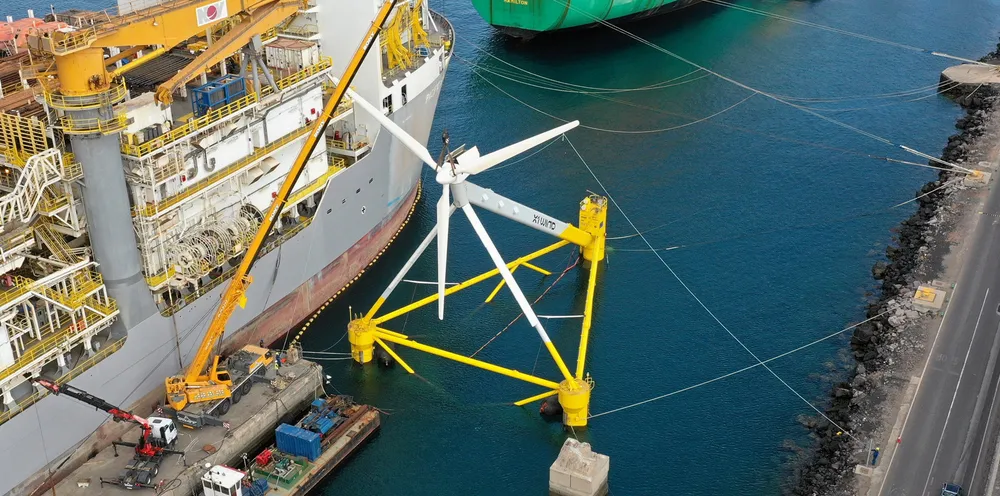Vestas rotor-ready X1Wind floating wind pilot set for key Atlantic trials
Spanish sector pioneer aims to have part-scale flagship moored for commissioning 'in the coming weeks' ahead of year-long trials off Canary Islands

Spanish floating wind pioneer X1Wind’s part-scale prototype has been fitted with its rotor in advance of first trials off the Spanish island of Gran Canaria in the Atlantic Ocean.
<b>Focus your mind: get the insight you need with the Recharge Agenda</b>
The global energy transition is gathering momentum – and the accompanying news-stream becoming an information deluge. Separate the green giants from the greenwash and the hard facts from the click-bait headlines with Recharge Agenda, our curation of the market-making events of the week, distilled down into one quick-read newsletter. Sign up here for free
“We are thrilled to complete this latest milestone as we move towards deployment,” said Raventos. “The rotor assembly represents a symbolic moment in this project, fitting the blades which will ultimately harness the wind and demonstrate our downwind design.”
Strong summer trade winds in the Canary Islands led to “minor delays” after the initial load-out, he said, “but this exciting period brings the assembly process to fruition”.
The innovative PivotBuoy design, which hybridises a shallow-draft semisubmersible hull with a tension leg platform mooring system and a turbine set in a downwind orientation, has been engineered by X1Wind around lightweight “structural efficiency” and scalability, “while minimising environmental impact on the ocean”.
Installation of the unit’s cabling and anchors in 50 metres of water off Gran Canaria is set for “the coming weeks” in advance of final commissioning.
“From the outset, X1 Wind has been committed to find a more efficient structural approach for floating wind compared to more traditional systems,” said Raventos. “Our system will drive greater structural efficiency, reducing loads, especially the bending moments at the base of the tower, allowing for a lighter design.”
The PivotBuoy’s distinctive downwind design, said X1Wind co-founder Carlos Casanovas, aims to move the industry beyond the upwind concept issue of tower strikes, where the blades bend under wind loads and contact the tower.
“With 100-metre-plus blades becoming more prevalent in offshore environments, significant measures are needed to avoid tower strikes,” he said. “This typically involves increasing the distance between the blades and tower applying a tilt and cone angle, and designing more costly pre-bent and stiffer blades, which also makes them heavier.
“However, these measures come with increased manufacturing complexity, cost and potential loss of power generation. Using a downwind configuration reduces the risk of tower strikes, opening up the possibility of using lighter, more flexible and therefore cheaper large-scale wind turbine designs,” said Casanovas.
“These are key characteristics which will enable the development of future ‘extreme-scale’ downwind structures with research already being conducted on 200m blades and 50MW power ratings.”
The deployment of the X30 is backed by pan-European consortium including EDP, DNV, IntecSEa, ESM and Degima, as well as research centres WavEC, DTU and Plocan, and has received some €4m ($4.6m) via the European Commission H2020 programme.